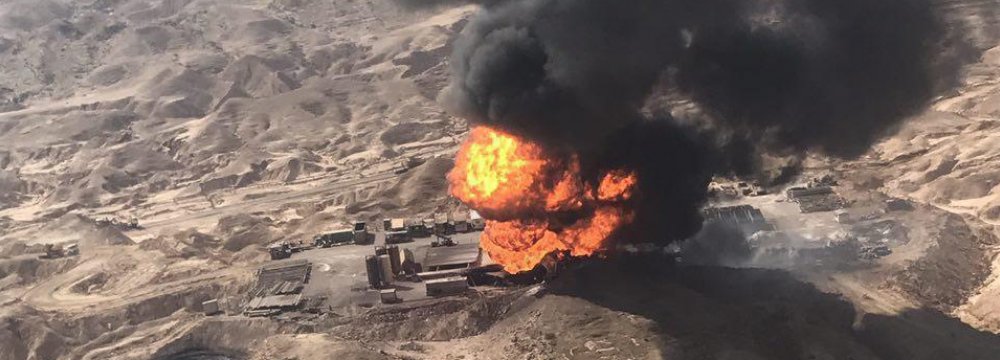November 10, 2017

Saudi Arabia has accused Iran of being behind the firing of a missile from Yemen aimed at the Saudi capital of Riyadh Saturday.
The missile was shot down by the American-made missile defense system that Saudi Arabia owns and did no damage.
If the missile was indeed of Iranian origin, the loss will poke a big hole in Iran’s claims to have developed marvelous missiles that will deter enemies from ever attacking Iran.
However, Iran denied supplying its missiles to Yemen. In fact, it denies supplying any weapons to the Houthi rebels who control most of Yemen. But Iran has been caught multiple times trying to ship weapons to the Houthis. Whether the particular missile fired at Riyadh was Iranian-made has not yet been established, however.
Saudi Arabia responded angrily to the missile firing. Much news coverage cited the Saudis as saying the missile firing was an Iranian “act of war,” which would justify Saudi military action. That is not, however, what the Saudis said. An announcement said the multi-nation military command running the war against Yemen “considers this a blatant act of military aggression by the Iranian regime, and could rise to be considered an act of war against the Kingdom of Saudi Arabia.”
That was a very carefully phrased statement that did not signal war, but, in fact, telegraphed that the Saudis do not want a war with Iran. Many people in the region say the Saudis hope that the Americans will go to war with Iran and pull the Saudi chestnuts out of the fire.
The Saudi-led military coalition later said it would temporarily close all air, land and sea access to Yemen—except for humanitarian goods—to stop Iranian deliveries of weapons to the Houthis. But the Saudis have been trying to stop that flow for years and have failed, so it wasn’t clear if the public announcement of a blockade meant anything.
The Trump Administration has expressed concern about the Iranian arms deliveries. But it has not yet reacted to the Saudi-declared blockade and it remains to be seen what it will do to try to stop the arms flow.
The United Nations Security Council years ago prohibited Iran from exporting any weapons, so there is a clear legal basis for stopping any Iranian deliveries to the Houthis.
The Houthis have fired many missiles into Saudi Arabia in recent years. They have been aimed at Saudi bases and troop concentration, but not cities.
President Trump joined the Saudis in blaming Iran, not the Yemeni rebels, for the missile attack. On his flight to Tokyo, Trump told reporters, “A shot was taken by Iran, in my opinion, at Saudi Arabia … and our system knocked the missile out of the air.”
But Major General Mo-hammad-Ali Jafari, the commander of the Pasdaran, which runs Iran’s missile program, responded, “Mr. Trump has said many baseless things and told many lies. We do not have even the possibility to transfer missiles to Yemen. The missiles belong to them and they have increased their range.”
Saudi Foreign Minister Adel al-Jubeir, however, said the missile was an Iranian design, as determined from the parts that crashed in Saudi Arabia. He said the missile’s parts were smuggled into Yemen where technicians from the Pasdaran and Hezbollah assembled it. He said Hezbollah technicians handled the actual launch.
